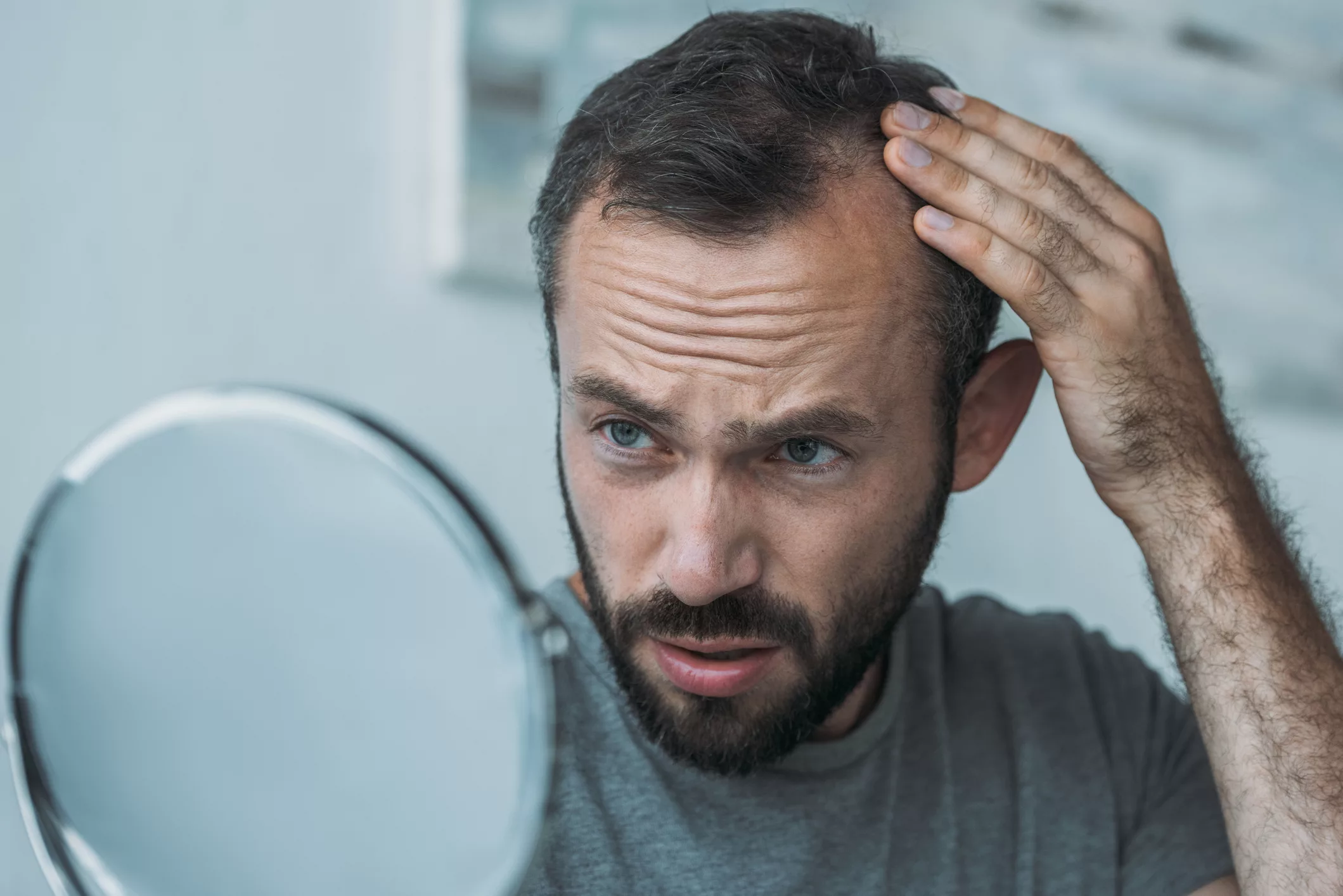
Researchers say that more than 80% of men will experience hair loss during their lifetime. Genetics, stress, and the use of certain medications are some of the many risk factors for hair loss. Fortunately, several treatments can stimulate new hair growth, even if you meet one or more hair loss risk factors.
1. Medications for Male Pattern Baldness
There are two FDA-approved medications for male pattern baldness: minoxidil and finasteride.
Minoxidil is an over-the-counter topical treatment that can be applied directly to the scalp. Finasteride is a pill that you take daily and is available only by prescription.
Results produced by these medications are usually noticeable after several months as long as you use these treatments consistently.
2. Medication Review
Hair loss is a side effect of many medications, such as those used to treat arthritis, lung disease, and cancer. Adalimumab, sulfasalazine, and carbocysteine are some medications linked to hair loss.
Read the labels of all your medications to see if hair loss is a side effect. Talk to your doctor about trying different treatments if you think your medications are causing hair loss.
3. Hair Transplants
Hair transplantation is a cosmetic procedure in which hairs are taken from other parts of your scalp and implanted into areas where hair is gone or thinning. You may need multiple treatments to achieve the desired effect.
Cosmetic surgeons at plastic surgery clinics and medical day spas can perform hair transplants.
4. Light Therapy
Light therapy for hair loss is a noninvasive treatment in which areas of thinning hair are exposed to low levels of light wavelengths. This therapy stimulates the activity of cells in hair follicles and promotes the repair and regeneration of damaged tissues.
Light therapy can be performed at home with a red and infrared light therapy box or with a healthcare provider that offers this service.
5. Smoking Cessation
Smoking can damage blood vessels that deliver oxygen and nutrients to hair follicles. Toxins in cigarettes and other tobacco products can also damage hair follicle cells and cause hormonal imbalances that increase your risk for hair loss.
Don’t start smoking. If you smoke, ask your doctor about effective treatments to help you quit.
6. Scalp Massage
Massaging the scalp stimulates your hair follicles which can help you grow thicker, healthier hair.
Press your fingertips against your scalp and move them in small circular motions using light to medium pressure. Massage your entire scalp for several minutes a day. This is also a service commonly offered by spas that do facials and other cosmetic treatments.
7. Nutrition
Fruits, vegetables, whole grains, nuts, and fish are some healthy foods loaded with nutrients and antioxidants that can promote hair regrowth. Vitamin D, vitamin C, and iron are among the nutritional supplements shown to treat hair loss.
Include more nutrient-dense foods in your diet, such as eggs, dark leafy greens, salmon, and walnuts. Your doctor can also work with you to improve your diet to support hair growth.
8. Stress Reduction
Chronic stress causes your body to produce higher amounts of a stress hormone called cortisol. High cortisol levels can drive inflammation and upset your hormonal balance, contributing to hair loss.
Start managing and reducing stress in your life. Exercise regularly, practice mindfulness meditation, or listen to soothing, relaxing music before bed.
9. Green Tea
Green tea contains flavonoids and antioxidants that produce numerous health benefits—including hair regrowth. The evidence behind green tea and hair regrowth is anecdotal, but one study found that this beverage supported hair regrowth in rodents.
Aim to drink at least one daily cup of green tea and enhance its flavor with fresh citrus fruits and honey.
10. Saw Palmetto
Saw palmetto, a tree native to southern parts of the United States, contains an extract (available in supplement form) that improves symptoms of urinary and prostate disorders and stimulates hair growth in men. A review of several studies showed that palmetto can improve the count, density, and quality of your hair.
11. Oils
Rosemary, peppermint, and coconut oils may help stimulate hair regrowth. When massaged into the scalp, these oils may boost the health of your hair follicles and increase blood flow to areas of thinning hair.
12. Biotin
Biotin deficiency has been linked to thinning hair and hair loss. Therefore, getting adequate amounts of this vitamin may help you regrow your hair. Also known as vitamin B7, biotin is naturally found in foods like eggs, oats, and sweet potatoes.
13. Hibiscus
The amino acids in hibiscus may help restore the activity of dormant hair follicles so you can regrow hair in thinning areas. Hibiscus also has other benefits for hair, including reducing dandruff, preventing split ends, and thickening hair.
Massage hibiscus oil into your scalp or use hair products that contain a high concentration of hibiscus.
14. Onion Juice
Raw onion juice contains several B vitamins and other antioxidants that can reduce inflammation—including on the scalp—which may be contributing to hair loss. Applying raw onion juice topically to your scalp may lead to hair regrowth in six weeks.
Place raw onions into a juicer to extract their juice or blend raw onions to create a paste that can be applied directly to the scalp.
15. Bhringraj
Bhringraj is an herb that belongs to the sunflower family. Like many other herbs and plants, bhringraj has medicinal properties that can promote hair growth. Massage bhringraj oil directly into the scalp to grow new hair.
16. Gentle Hair Care
Pulling hair, bleaching hair, and using hair products with harsh chemicals can cause hair loss. Stop these practices to promote hair regrowth.
17. Doctor Checkup
Hair loss may be caused by underlying conditions such as diabetes, lupus, and nutritional deficiencies. Make an appointment with your doctor to discover whether underlying conditions are causing your hair loss. Treating those conditions can often resolve secondary symptoms like male pattern baldness.
Your doctor can also recommend other effective treatments that can stimulate hair growth for men.